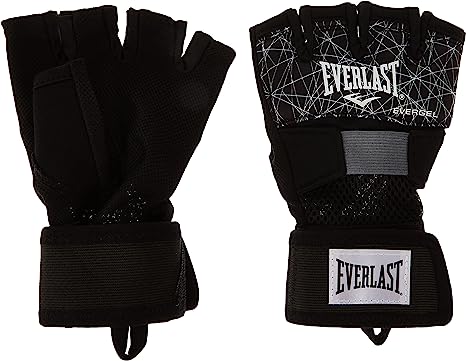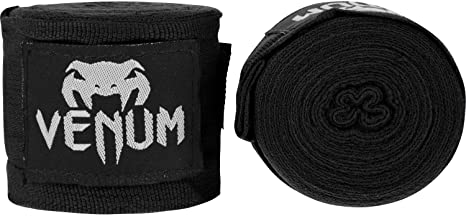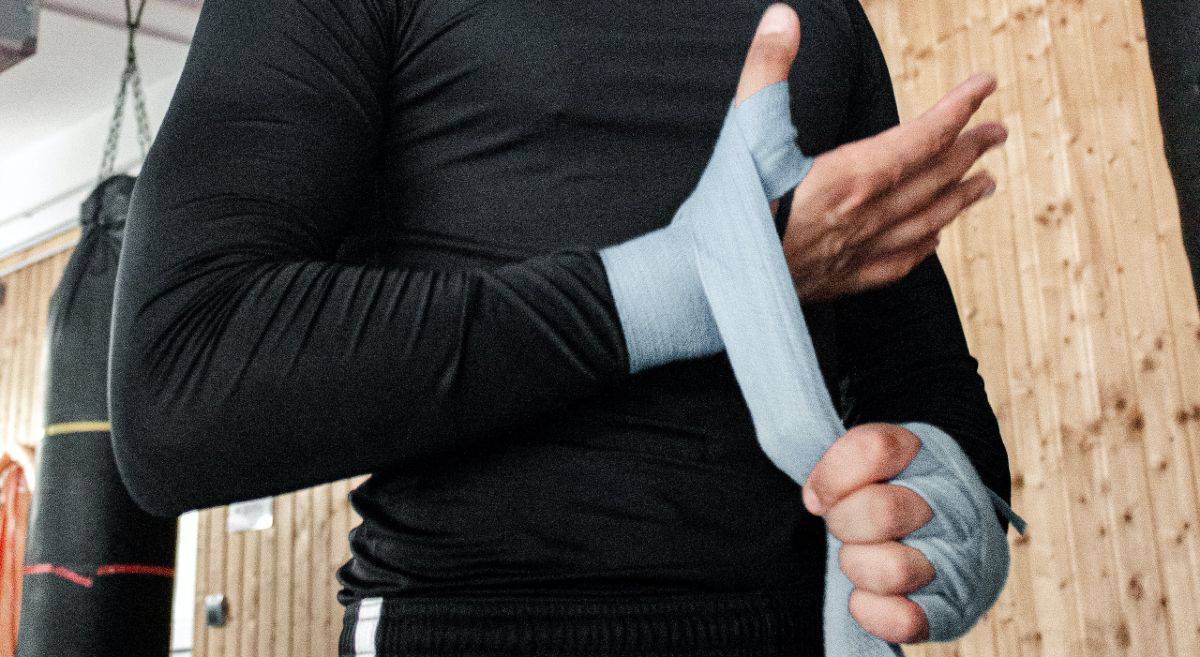Many amateurs are trying out boxing these days. A significant number of them are getting their information from the Internet. There are many false opinions online regarding the bandaging and the boxing gloves used in the ring. This results in beginners having to go through bruised knuckles and knuckle injuries before they get the hang of the sport. It is straightforward to avoid getting bruised knuckles when boxing.
It is vital to keep your hands free from injury when you are boxing. For this purpose, it is essential to keep your hands adequately wrapped using shock-absorbing wraps. It is also recommended to use padded boxing gloves to ensure that the punches’ force does not injure your hand.
With the increase in boxing popularity over the past years, several people are venturing into boxing and taking it up as a full-time sport. However, boxing is not all glamorous and fun. It is not as simple as Mohammad Ali’s saying, “Float like a butterfly, sting like a bee”. There are many technicalities involved in the sport, and it needs proper training to become a good boxer. We are here to provide you with better and more authentic information regarding the proper care your hands need when boxing.
What is Boxer’s knuckle?
The human skeleton is a robust structure. However, your bones can still be wounded, broken, and fractured if you are not careful. Especially in combat sports like boxing, the player needs to be extremely careful and take the sport’s technicalities into account before they step into the ring to avoid injuries.
Boxing is one of the sports which has the maximum rate of injuries among players due to negligence. One of the most common injuries in boxing due to inexperienced players is the Boxer’s Knuckle.
The Boxer’s Knuckle occurs when the knuckle joints are dislocated or injured due to the knuckles’ continuous force. This is one of the significant career-threatening injuries in boxing. In it, boxers suffer severe pain which is onset by the dislocation of the knuckle joints. It is accompanied by swelling and extreme pain when the boxer moves or flexes the finger/s.
Many boxers have lost their careers to injuries, including Duk Koo Kim, Jess Williard, Dmitry Pirog, etc. However, a boxer’s knuckle is easy to diagnose and treat, and if done correctly – the player can return to the ring in 2-3 months.
Please don’t underestimate the boxer’s fracture and treat it on time. In some cases, surgical repair is required, and it is way better than putting an end to your fighting career. An open fracture is rare, but microtraumas are even more dangerous because they are invisible. In that case, other symptoms will appear when you’re already hurt badly, so I advise you to visit your doctor at least once per year.
Do boxers get bruised knuckles?
Apart from bone injuries, a boxer’s knuckles also tend to become bruised because of repeated force and impact. Mostly when the boxers are punching sandbags, the repeated friction and force resulting from the impact can result in bruising and pain that may last for days if proper care is not taken.
As a boxer, it is essential to take extreme care of your knuckles. Boxers and other Mixed Martial Artists tend to earn from their hands and therefore need to treat them with utmost care. Your skin, muscles, and bones are volatile structures and need protection from repeated impacts. In combat sports, however, it is crucial to toughen yourself up so that your body can take the stress that comes with the sport.
When new players step into combat sports, especially boxing, bruised knuckles are repeated complaints. It is very common for your knuckles to get swollen or painful due to either long-term sparring or continuous punching of a sandbag. However, there are a lot of ways to avoid this from happening.
Recognizing The Signs Of A Bruised Knuckle Or Broken Knuckle
There are a few indicators of bruised or broken knuckle bones. I will not discuss the treatment plan in this article, I will only focus on the symptoms. Please read carefully and don’t ignore your injured hand!
The most often symptoms that might allude to bruised or broken knuckles are:
- Sharp pain after a direct hit or a collision with an opponent or a hitting object;
- Trouble making a fist – if you cannot clench your fist, it is a red flag;
- Pain while flexing or extending your hand;
- Swelling – if swelling increases after a hit, it is mostly a symptom of a severe hand injury;
- Stiffness after impact – another red flag, it happens especially in bare-knuckle fighting bouts.
If you see these symptoms, my recommendation is to visit a qualified orthopedic expert for an accurate diagnosis. He’ll guide you through treatment options and other steps of your healing process.
How To Avoid And Prevent Knuckle Bruising When Boxing?
You can bring many differences in your technique and your training kit, which can help you stay away from bruised knuckles. Some of these hacks include:
Fixing your stance
The punching stance or form is critical in avoiding injuries during boxing practice and fights. It is necessary to have a proper standing form as well as the form of your hand. If your footing is not ideal and is uneven, your punch will not only lack force – but it will injure your hand as well. It is important to have your first two knuckles take your punch’s significant impact and not let it dissipate to your wrist. The footing is also important to keep your center of gravity appropriately aligned.
Using properly padded gloves
Your boxing gloves are the most critical part of your kit and, therefore, need to be proper. There are different kinds of gloves being sold for different purposes, i.e., sparring gloves, combat gloves, training gloves, etc. It is also essential to use gloves that fit your hands snugly and are neither too loose nor too tight. Furthermore, it is necessary to get properly padded gloves. For beginners just starting training and sparring, it is recommended to use 14oz. Or 16oz gloves because the additional padding is instrumental in avoiding hand injuries.
Wrapping the hands
It is crucial to bandage the hand with wraps before you place them in the boxing gloves. If the padding and wrapping are not done correctly, the punches’ impact can result in knuckle injuries.
Simultaneously if the wrappings are too dense, the punches will be sloppy, and your wrappings and gloves might slip off. But a slower and lighter punch is way better than a broken bone, so protect yourself at all costs!
Avoid Open Hand punches
If you keep your hand loose when throwing a punch, it can result in the force being concentrated on your knuckles and wrist. This can result in severe stress on your hands, resulting in knuckle injuries, swollen knuckles, and wrist injuries.
Ensure that you are keeping your fist closed when throwing a punch. This allows the force to be concentrated within your hand and dissipate because of the tightly closed fist. Make sure that your glove does not fit too tightly.
Keep in mind – the most vulnerable knuckle is the bare-knuckle! The number of injuries in disciplines where fighters don’t use gloves or hand wraps is significantly bigger.
Keep your body in its optimal condition
It is important not to push your body beyond its human limits. Many boxers have gotten severely injured in the ring because they refuse to let their bodies give up when the human body’s boundaries are reached. Listening to your body and the signs it gives you is of great significance when it comes to physically taxing sports. If your knuckles are already bruised, give your hand time to heal before you step back into the ring with better wrapping and padding.
What helps sore knuckles from boxing?
It is impossible to properly fight and do your best in the ring if you have bruised or sore knuckles. Consequently, it is advised to heal from them before you can step back into the ring. The most common things that boxers do to help their sore knuckles get better include:
- Applying ice to the knuckles or soaking the hands in ice-cold water
- Taking anti-inflammatory medications and painkillers can also help.
- Rest is crucial when it comes to healing sore knuckles. Do not get back in the ring if your hand has not healed
- Use muscle and bone, relaxing ointments, and oils
Will Boxer’s knuckle heal itself?
As mentioned above in the article, a Boxer’s Knuckle is not bruised or sore. It is a bone injury that is caused by the dislocation of the knuckle joints, it can’t heal in a few days by itself. It needs a doctor to be treated and diagnosed.
If you try to let your injury heal by itself, not only will it forever affect the motion of your fingers, but it will also result in you not being able to fight. If you hurt your metacarpal head or other fingers badly, the best thing you can do is seeking for immediate medical attention. Your symptoms worsen as time goes by, so please don’t mess around!
If you have suffered a knuckle injury while boxing or kickboxing, making it painful and difficult for you to use your hands, you need to visit a doctor immediately. After the diagnosis of a Boxer’s knuckle – there are two ways the doctor will recommend you to go. There is a big difference between a broken knuckle and a bruised knuckle.
If the injury is not severe and the tendon of your knuckle is still intact, doctors will generally bandage your hand to immobilize it. They will also give you anti-inflammatory medication, which will allow your hand to heal quicker.
If, however, your knuckle joint has been dislocated and the tendon is ruptured, you may need proper surgical treatment to recover from the injury. Moreover, a few months of rest is needed before you can get back in the ring and fight again. You’ll have to say goodbye to fighting for a few weeks or even months.
It is essential to not push your body beyond its limits and not ignore the aches and pains that are showing up in your body. You will only be able to fight properly if your body is in its ideal state. If you feel sharp pain, please don’t hesitate to visit a doctor for an accurate diagnosis!
Boxing Knuckle Injuries: Not Exclusive To The Boxing Ring
The term “boxing knuckle” is generally used to describe a type of injury that is common in boxing, but similar injuries can occur in any situation where there’s a forceful impact on the hand or fingers. For example, someone might sustain a similar injury from falling and landing on their hand, punching a wall or other hard surface, or during other contact sports.
These types of injuries typically involve trauma to the knuckles or the metacarpophalangeal (MCP) joints, which are the joints where the fingers meet the hand, but it can also include the metacarpal bone, especially when you hurt yourself while landing hooks or overhands. The term “boxer’s knuckle” specifically refers to an injury of the MCP joint of the index or middle finger, but this can occur without boxing if there is a similar force applied to the hand.
Our recommended products to help your hands heal:
You can stay away from broken knuckles or medical issues by wrapping your knuckles and protecting them. This is especially important in mixed martial arts because gloves are thinner and there is way less protection between your knuckle bones and your opponent or heavy bag.
There are many high-quality products online that can help you with hand protection, and our article about the best hand wraps covers the whole topic. But here are a couple of our recommendations in this regard too.
The Evergel Handwraps
Everlast Evergel
These undergloves provide a solid base of protection. Made with neoprene and featuring gel padding on the back, they safeguard your knuckles from impact. The Evergel technology offers advanced cushioning, while Compress-X technology provides a supportive fit and enhances circulation. Crafted from high-quality neoprene, these handwraps ensure optimal comfort and durability. Ideal for various workouts, including bag training, mitt workouts, sparring, martial arts, and fitness sessions. The wraparound wrist strap delivers superior support and a customized fit.

Pros
- Affordable
- Can be easily slipped on and off
- Wrist and knuckle support
- Comfortable fit
Cons
- Not suitable for constant heavy bag workouts
These hand wraps are in the form of gloves and unisex products with many positive reviews on Amazon. They come with triple layers of a gel which absorbs pressure and, therefore, keeps the stress on our knuckles to a minimum. The price of the product is also quite reasonable, and it has a useful product life.
Venum Boxing Handwraps
Venum Kontact
These elasticated handwraps are made from stretch cotton, providing a perfect fit and exceptional comfort. The Velcro fasteners ensure a secure and adjustable fit, while the thumb straps make them easy to use. Designed for boxing practitioners, these handwraps offer the essential accessory for your training needs. Venum Kontact are the go-to choice for reliable support and durability.

Pros
- Comfortable and easy to use
- Strength and durability
- The handwraps fit well and stay in place when wrapped properly, providing adequate support
- Wash durability
Cons
- Thin fabric
Cotton wraps are available in several colors and are not only aesthetically pleasing but are fantastic shock absorbers as well. These wraps are sold at a fair price and do not deteriorate quickly, either. They protect your hands and knuckles during punching and have amazing reviews on Amazon.
Make sure you are keeping your hands protected if you want to excel when it comes to boxing. By following some elementary steps, you can protect your knuckles from the force that comes from the impact during sparring and combat.
Frequently Asked Questions about Bruised Knuckles
What does a boxer’s knuckle feel like?
It is not much different than a fractured hand. You will see massive swelling, pain, and bruising around the affected knuckle and hand surface.
The range of motion associated with a finger or knuckle affected might be slightly or significantly decreased, depending on the severity of an injury. In some cases, there is a popping or snapping felt when a fist is made.
Knuckles are easy to hurt, there are many small, non durable bones and even the slightest contact could lead to a severe injury as there are no natural layers of protection between your fist and the opponent’s head or body.
Does a broken knuckle bruise right away?
In many cases, the bruising appears almost instantly. It depends on the severity of the break, but it happens because of rapid blood loss in the injured area, which reflects as a bruise. Your hand might go numb as swelling increases.
If you suffered nerve damage, the feel in your knuckle might be reduced. It happens in more severe cases. When the doctor believes you suffered a knuckle fracture, he’ll send you X ray to confirm the diagnosis.
Do bruised knuckles heal themselves?
It depends on the severity of the injury. If you suffered a fracture, you must visit a doctor for further treatment. Yet, when your hand isn’t broken, you can let its healing process do the rest of the job.
When the injury is not too severe, your knuckle will need from a few weeks to a few months to fully recover – swelling and pain are normal. If there is no improvement after 4-7 days, please visit your doctor – it could indicate a more serious injury.
What are Home remedies just after a knuckle bruising?
You can stop the swelling in the first 24 hours by using the famous RICE method, which serves as a first-aid kit during any kind of fracture. We are going to explain what this syntax exactly means:
- R = rest. In some cases, resting can help. Yet, severe cases demand different types of medical care.
- I = ice. Cloth-covered ice packs can be put on the injured area. Hold it for at least 10-15 minutes, make a 5-10 minute break, and repeat the process two or three times. This is recommended even for a little finger injury.
- C = compression. Wrap your injured hand in a soft cloth bandage. It could reduce swelling and stabilize injury in the first 24 hours.
- E = elevation. If possible, elevate the extremity to reduce swelling. This works for all other injuries too, not only knuckles.When a doctor allows you to move the injured area, the next step is mostly physical therapy or some exercises at home. You might have to squeeze a rubber ball or stretch your hand by placing a rubber band around your fingers. The doctor will follow your recovery and tell you what to do more precisely.
Why is my knuckle bruised for no reason?
Sometimes you might just fall or land on your hand and suffer an injury. Many times, you can eat a shot during the sparring session while blocking. If you have a bruised knuckle, it doesn’t have to mean that you have suffered a dangerous injury.
One thing is certain – blood loss has happened in an injured area. You see it on the outside as a bruised tissue. But every single bruise doesn’t mean your injury is severe.
I will give you an example – my knuckles were bruised many times during mixed martial arts grappling sessions. I know it sounds weird, but grabbing gloves is illegal. But when you grapple without gloves or transition, an opponent squeezes you and it might lead to microtrauma in your tissue.
When to see a doctor?
You should definitively visit a doctor when you have a visible fracture or when there is a lot of swelling. Also, I’d recommend you seek for accurate diagnosis when your hand is popping, it might be a sign of a severe injury.
In all other cases, you can wait for a few days, but if it doesn’t get better, please consult the orthopedic expert.

